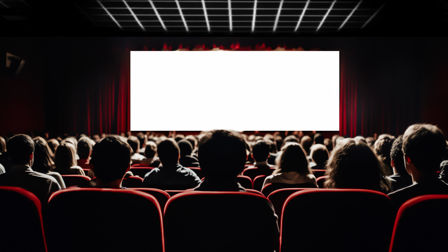How Not To... Jump Aboard the VR & AR Hype Train
MediaMonks' Samuel Snider-Held prototypes for kicks & tinkers for thrills & imagines the possibilities for VR & AR.
VR and AR are the future, or so they say. With headlines like “2016 Will Be the Year That Sets the Stage for Virtual Reality” and “How VR Is Starting To Become Our Reality In 2017” taking over the hyper-saturated blogosphere, it might seem like VR and AR are the only technologies worth investing in. But, as a virtual and augmented reality creative technologist, I’m constantly telling clients and colleagues to question this sentiment.
I work on some of the world’s most forward-thinking VR and AR projects every day and wholeheartedly believe in the power of these technologies to alter, integrate, or create new experiences and memories. At the same time, it’s also my job to think critically about technology and which new tools are best suited to meet client objectives.
VR struggles with two things: sharing and distribution. Since digital advertising lives or dies by social, the question many brands face is, how do we share cutting-edge VR and AR experiences? The struggle is that these experiences are not inherently shareable. VR hijacks your perception of the world by creating an illusion for you and your eyes only. Unless the VR experience is broadened through another channel, such as a teaser video on Youtube for example, if you want to share it with your friends, they have to be as big as a VR geek as you.
So if you’re a digital strategist or brand manager stretching yourself to explore how you can engage with these tools, I encourage you to stop, take a breather, and first read this post. It might just be that the best tool for the job is another technology entirely.
A trailer from last year's The Martian VR experience:
The Next Big Thing – Social VR Integration
Brands seem to only be interested in creating their own VR experience, instead of exploring opportunities surrounding the hype. But creating your own one-off VR or AR experiences in the hopes of creating a new channel for brand awareness is like creating an entire branded social network or community. This was very popular in the early days of social media advertising, but now you advertise within these social networks instead of trying to replace them. The same will happen with AR and VR.
For example, while Facebook is working on their experimental VR social platform Spaces, there already exists social platforms like the Rec Room (below) and Altspace where users can virtually join others and talk, play games, and create things. If you’re hell-bent on creating VR & AR content for your brand, this is the trend to watch. The social iterations of VR will have an infrastructure designed for you to tell brand stories. This will be much cheaper and easier than creating your own application, and you can see the beginnings of this in Facebook’s AR studio.
Experiences Unique to VR & AR
It’s undeniable that VR & AR can create unique experiences and express creative ideas that are not possible with any other technology. So if you’re dead set on creating a VR or AR experience, then make sure that you play to the medium’s strengths.
Take for instance take Into the Wild (below) by WWF, Lenovo and Google, the world’s largest mixed reality experience to date. Using AR markers to place tiny virtual objects or characters on your table has been around for ages, but this is different. Using Google’s Tango technology, Singapore’s ArtScience museum was augmented into a living rainforest. Walls were transformed into trees and corridors into forest paths and guests were given tablets which they could walk around and interact with endangered animals, something they can’t do in real life. The magic of AR is not just bringing bringing virtual animals to your dining room table, but to your entire environment.
Or perhaps my favorite example, Google Earth VR. Imagine having the whole planet at your fingertips, one moment deftly flying through the skyscrapers of midtown Manhattan, and the next sitting peacefully at the top of Mount Everest. Taking data from satellite imagery and 3D photogrammetry, the environments in Google Earth VR are majestic, and are some of the most presence inducing in all of VR. There’s nothing more mind blowing than virtually standing outside of your apartment looking up at your window, knowing that you’re actually inside, decked out in VR gear. Furthermore, the experience really gets you excited about the VR’s future. If this is what it looks and feels like now, what will it look like 10 years from now?
The Future
And what about other VR experiences that could well and truly be useful for real life? In the automotive industry you could allow potential customers to drive through impossible test drives, while changing features and testing during the same experience.
Or, think about how VR can provide an amazing tool for training new professionals in technical fields.
What if you could train to be a wind turbine technician by running through a variety of possible scenarios before you ever step foot in one? Or, imagine learning a language. How useful would it be to simulate the feeling of language immersion by placing someone learning french in a Parisian cafe, and they can only navigate the experience by correctly pronouncing various phrases?
Or museums! Imagine going to the MOMA and seeing Jackson Pollock via an AR tablet ferverishly throwing paint at one of his canvases!
The possibilities are endless, but that doesn’t mean that every possibility is right for your brand. So before you spend a whole lot of your (or your client’s) money, ask yourself this. Why do you want to create a VR or AR experience? Do these technologies really provide your brand something better than other technologies? Or is your idea just a gimmick? If you’re looking for reach or engagement, then maybe wait a while. As the VR & AR markets mature, the channels for telling your brand stories will mature with them.
Connections
powered by
- Post Production MediaMonks Films
- VR & AR Creative Technologist Sam Snider-Held
Unlock this information and more with a Source membership.







 Membership
Membership


